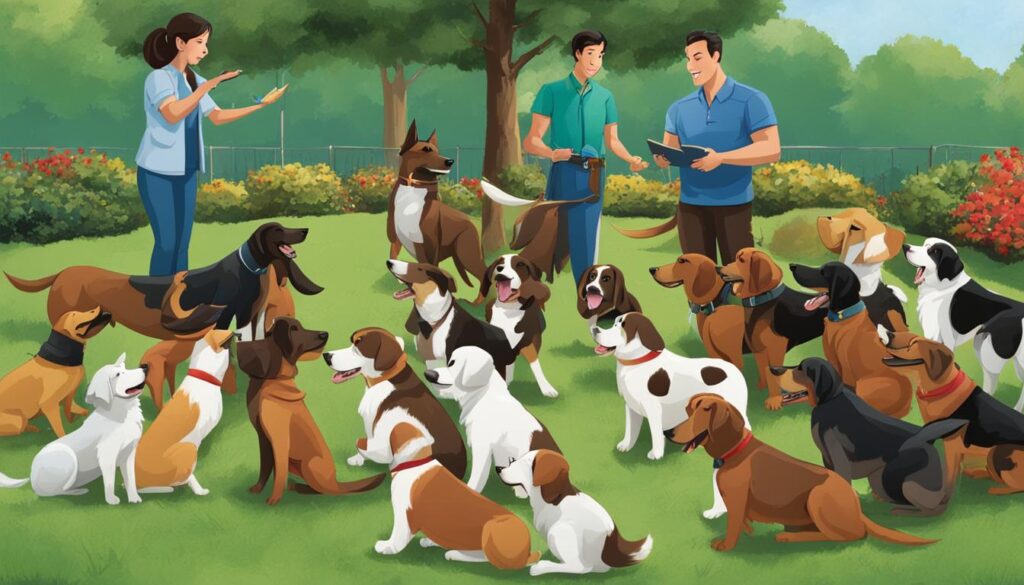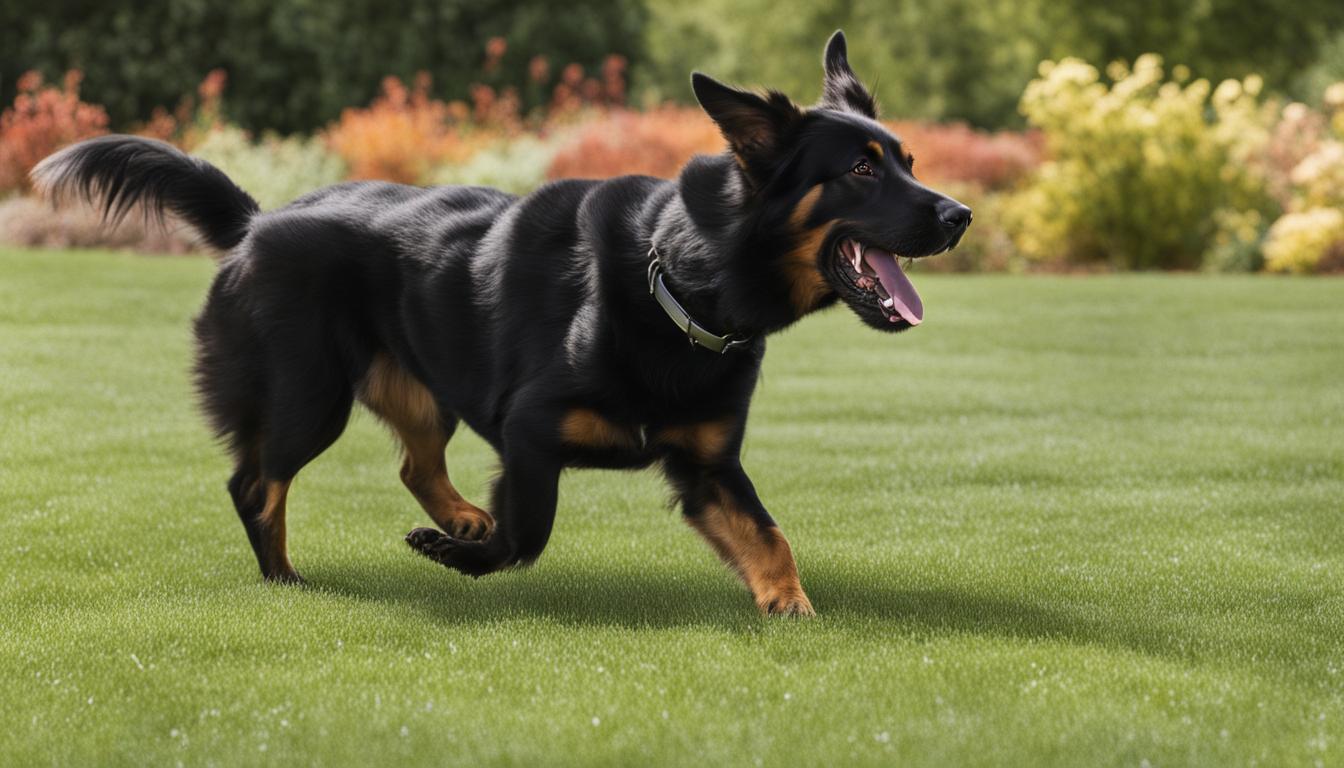A recent study conducted by researchers from the Wolf Science Centre at the University of Vienna and the Pontifical Catholic University of Minas Gerai in Brazil has found that speaking nicely and using a friendly tone of voice during dog training exercises can be more effective in getting dogs to follow commands.
The study involved nine mixed-breed dogs who participated in 135 training sessions with different trainers. Trainers varied their tone of voice, using “nice,” “neutral,” or “reprehensive” speech. Results showed that dogs responded more accurately to commands when trainers used a friendly voice, creating a positive atmosphere and increasing the social responsiveness of the dogs. On the other hand, the use of a reproachful voice resulted in negative emotional signs displayed by the dogs and decreased their performance.
Key Takeaways:
- Using a friendly tone of voice during dog training can improve the effectiveness of commands.
- A positive atmosphere created by a friendly voice can enhance dogs’ social responsiveness.
- Using a reproachful voice can lead to negative emotional signs and decreased performance.
- Consistency in tone and voice is crucial for successful dog command training.
- Speaking nicely and using clear commands can improve clarity and understanding for dogs.
The Impact of Non-Verbal Cues on Dog Behavior
Dogs not only respond to the tone of voice but also to non-verbal cues during training. Non-verbal cues include body language, facial expressions, and gestures that dogs can interpret. By using consistent non-verbal cues along with voice commands, trainers can effectively communicate with dogs and reinforce their training. It is important to understand that both verbal and non-verbal cues should be used in conjunction to achieve the desired behavior from the dog.
When training dogs, your body language speaks louder than words. Dogs are highly observant and can pick up on subtle cues such as your posture, hand movements, and eye contact. For example, when teaching a “sit” command, stand tall with an upright posture and hold your hand in a palm-down position. This non-verbal cue, combined with the verbal command, will help the dog understand what is expected of them.
In addition to body language, facial expressions also play a crucial role in dog training. Just as humans can express emotions through their faces, dogs can also interpret various facial expressions. When giving commands, maintain a calm and confident facial expression to convey authority and assertiveness. Avoid harsh or aggressive facial expressions that can make the dog feel anxious or threatened.
Remember, dogs are highly sensitive to non-verbal cues, so be mindful of your body language and facial expressions during training sessions. Consistency in these cues will help the dog better understand and respond to your commands.
Verbal Commands vs. Non-Verbal Cues
While verbal commands are essential in dog training, non-verbal cues can enhance the effectiveness of your training sessions. Verbal commands are often accompanied by non-verbal cues naturally, such as hand signals or pointing in the direction you want the dog to go. These additional cues reinforce the meaning of the verbal command and provide clarity to the dog.
For example, when teaching a dog to “stay,” you can combine the verbal command with a hand gesture, holding your palm out towards the dog. This non-verbal cue helps reinforce the meaning of the command and signals to the dog that they should remain in place until given permission to move.
| Verbal Command | Non-Verbal Cue |
|---|---|
| Sit | Pointing downwards |
| Stay | Holding out palm |
| Come | Open arms towards yourself |
Using a combination of verbal and non-verbal cues helps reinforce the meaning of commands and allows for better communication between you and your dog. Take the time to incorporate non-verbal cues into your training sessions and see the positive impact it can have on your dog’s behavior.

Consistency in Voice Command Training
Consistency is key when it comes to voice command training for dogs. By using a consistent tone, volume, and word associations, you can effectively communicate with your furry friend and reinforce their training. Dogs learn through repetition and consistency, so using the same voice commands consistently will help them understand and respond to your commands more effectively.
When teaching multiple voice commands to dogs, it’s important to maintain consistency in both tone and delivery. Dogs can easily get confused if there are inconsistencies in the training process. Using different tones or variations of the commands can lead to miscommunication and hinder their progress. By staying consistent, you provide a clear and reliable set of cues for your dog to follow.
Avoid changing the words you use for a particular command and ensure that everyone in your household or training team is using the same voice commands consistently. This will prevent confusion for the dog and ensure that they understand what is expected of them. Remember, dogs thrive on structure and consistency, so maintaining a consistent approach to voice command training is essential for their success.
Teaching Multiple Voice Commands to Dogs
When teaching multiple voice commands to dogs, it’s important to introduce them one at a time and ensure the dog has mastered each command before moving on to the next. Begin by teaching the basic commands such as “sit,” “stay,” and “come.” Once your dog has a solid understanding of these commands, you can gradually introduce more advanced commands, such as “heel,” “down,” or “fetch.”
Focus on using consistent voice tones and gestures for each command to help your dog associate the correct action with the corresponding command. Positive reinforcement, such as treats or praise, can also be used to reinforce the desired behavior. Consistency in teaching multiple voice commands will help your dog become more responsive and obedient, making the training process smoother and more effective.
| Command | Description |
|---|---|
| Sit | The dog should sit down on command and maintain the position until released. |
| Stay | The dog should remain in place and not move until given the release command. |
| Come | The dog should come to you when called. |
| Heel | The dog should walk calmly by your side without pulling on the leash. |
| Down | The dog should lie down on command and remain in that position until released. |
| Fetch | The dog should retrieve an object and bring it back to you. |
By following these guidelines and maintaining consistency in your voice command training, you’ll create a strong foundation for effective communication and obedience with your dog. Remember to be patient, reward their progress, and make the training sessions enjoyable for both of you.

Improving Clarity in Voice Commands
When it comes to training your puppy, clear and concise voice commands are key to establishing a strong foundation for their obedience training. Using a neutral tone and enunciating your words clearly will help your puppy understand what is expected of them and avoid any confusion. Remember, puppies are still learning and may not fully grasp complex commands right away, so it’s important to be patient and consistent in your training approach.
In addition to using clear voice commands, it’s important to provide positive reinforcement when your puppy responds correctly. This can be in the form of praise, treats, or playtime, depending on what motivates your furry friend. Positive reinforcement helps reinforce the desired behavior and encourages your puppy to continue obeying your voice commands.
Creating a consistent routine is also essential for improving clarity in voice commands. Dogs thrive on structure and repetition, so establishing a regular training schedule and using the same commands consistently will help your puppy learn and respond more effectively. Consistency breeds reliability, and by being consistent in your voice command training, you’ll set your puppy up for success in the long run.
Remember, training your puppy takes time and effort, but with patience, consistency, and clear voice commands, you can help them become a well-behaved and obedient member of your family. So, start practicing those voice commands and watch your puppy flourish!

Voice Command Training Techniques for Puppies
Here are some helpful techniques to improve clarity in voice commands when training your puppy:
- Use a neutral tone: Avoid using a harsh or overly enthusiastic tone, as it can confuse your puppy. A neutral tone is clear and easier for your puppy to understand.
- Enunciate clearly: Speak slowly and articulate your words to ensure your puppy can discern the individual sounds in your voice commands.
- Start with basic commands: Begin with simple commands like “sit,” “stay,” or “come” before moving on to more complex ones. This allows your puppy to build a foundation and understand the basics.
- Be patient and consistent: Training takes time, so be patient with your puppy as they learn. Consistency is key, so use the same voice commands and reinforce them regularly.
By following these techniques and incorporating clear voice commands into your puppy’s training, you’ll be on your way to improving their obedience and strengthening the bond between you and your furry companion.
Conclusion
In conclusion, the effective use of voice commands in dog training is crucial for achieving desired results and strengthening the bond between you and your furry friend. By implementing advanced voice command techniques, you can take your training sessions to the next level and ensure that your dog responds promptly and accurately to your commands.
Research has shown that using a friendly tone of voice during training sessions creates a positive atmosphere and enhances your dog’s performance and emotional well-being. Remember, dogs are highly responsive to the way you speak, so maintaining a friendly and encouraging tone will go a long way in motivating them to follow your commands.
In addition to voice commands, incorporating non-verbal cues such as body language and gestures is essential for effective communication with your dog. By using consistent non-verbal cues alongside voice commands, you can reinforce your training and better convey your expectations to your furry companion.
Consistency and clarity are key when it comes to voice command training. Make sure to use the same tone, volume, and word associations consistently to avoid confusion. When teaching multiple voice commands, ensure that there are no inconsistencies in your delivery, as this can confuse your dog and hinder their progress. Remember, dogs learn through repetition, so be patient and persistent with your training efforts.
FAQ
How does tone of voice affect dog behavior during training?
Speaking nicely and using a friendly tone of voice during dog training exercises can be more effective in getting dogs to follow commands. Dogs respond more accurately to commands when trainers use a friendly voice, creating a positive atmosphere and increasing their social responsiveness.
What are non-verbal cues in dog training?
Non-verbal cues include body language, facial expressions, and gestures that dogs can interpret. By using consistent non-verbal cues along with voice commands, trainers can effectively communicate with dogs and reinforce their training.
Why is consistency important in voice command training?
Consistency is crucial in voice command training as dogs learn through repetition. Trainers and dog owners should use consistent tone, volume, and word associations when giving commands to help dogs understand and respond effectively.
How can I improve clarity in voice commands during dog training?
Clear and concise commands help dogs understand what is expected from them. Enunciating words clearly, using a neutral tone, and providing positive reinforcement when the dog responds correctly can enhance clarity in voice commands.





